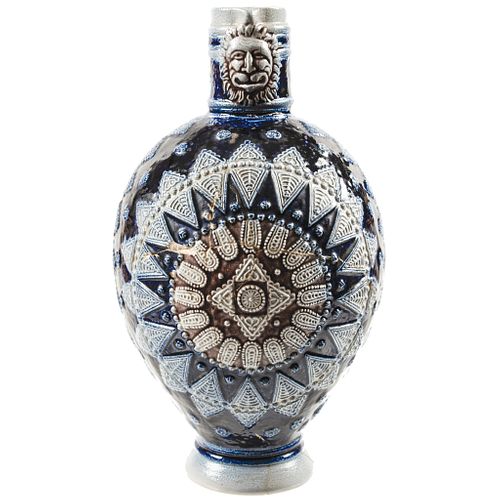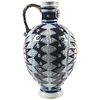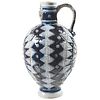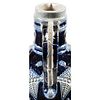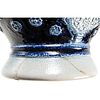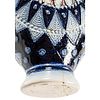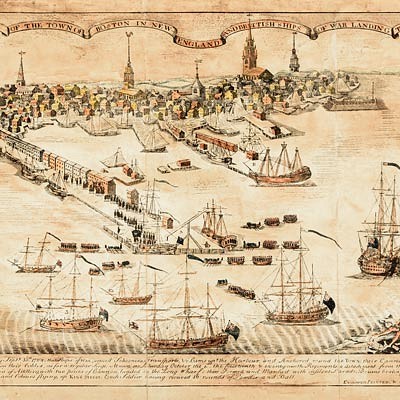c 1740 Large 11.5 Inch Tall Westerwald (German) Cobalt Blue Glaze Stoneware Jug
Lot 119
Categories
Estimate:
$600 - $800
Absentee vs Live bid
Two ways to bid:
- Leave a max absentee bid and the platform will bid on your behalf up to your maximum bid during the live auction.
- Bid live during the auction and your bids will be submitted real-time to the auctioneer.
Bid Increments
| Price | Bid Increment |
|---|---|
| $0 | $10 |
| $200 | $20 |
| $300 | $25 |
| $500 | $50 |
| $1,000 | $100 |
| $2,000 | $200 |
| $3,000 | $250 |
| $5,000 | $500 |
| $10,000 | $1,000 |
| $20,000 | $2,000 |
| $30,000 | $2,500 |
| $50,000 | $5,000 |
| $100,000 | $10,000 |
| $200,000 | $20,000 |
| $300,000 | $25,000 |
| $500,000 | $50,000 |
About Auction
By Early American History Auctions
Mar 20, 2021
Set Reminder
2021-03-20 12:00:00
2021-03-20 12:00:00
America/New_York
Bidsquare
Bidsquare : Autographs-Colonial-Political-Americana
https://www.bidsquare.com/auctions/early-american-history-auctions/autographs-colonial-political-americana-6509
330 Lots of Rare, Historic Autographs, Americana, Civil War Era, George Washington, Abraham Lincoln, Slavery & Black History, Revolutionary War Era, Colonial America, Federal Period, War of 1812, Colonial Currency, Indian Peace Medals & more... Early American History Auctions auctions@earlyamerican.com
330 Lots of Rare, Historic Autographs, Americana, Civil War Era, George Washington, Abraham Lincoln, Slavery & Black History, Revolutionary War Era, Colonial America, Federal Period, War of 1812, Colonial Currency, Indian Peace Medals & more... Early American History Auctions auctions@earlyamerican.com
- Lot Description
Colonial America
Vibrant Blue Westerwald Cobalt Glazed Stoneware Jug
c. 1740 Colonial Era, Beautiful Large 11.5" tall Westerwald (German) Cobalt Blue Glaze Stoneware Jug, "Lion Face" Spout, Very Fine.
This beautiful fire-glazed highly decorative Jug has exceptional vivid colorful eye appeal. It looks great on display yet it does have some hard to see damage. Our images show that it has several cracks in front and along its side, plus the handle is three pieces and its neck have been reattached. The original handle is complete but should not be held as it appears fragile, worthy of further restoration as desired. There is a thin horizontal 1" chip on one side just above the base, yet it is still an exquisite piece to behold and rare in such rich color and decoration. The Lion face at top is most impressive.
Colonial period Rhenish stoneware is salt-glazed stoneware that comes in two major varieties: a buff to dark gray bodied ware coated with a speckled brownish slip, and blue on gray, a light gray bodied ceramic often colored with cobalt blue and/or manganese purple pigments. Both varieties can be decorated with incised and/or applied molded relief decorations. An unpainted very light gray to off-white stoneware called Hhr ware, typically produced c. 1675 to 1750, forms a less commonly found variety of Rhenish stoneware.
True stoneware was developed in Germany at the end of the 13th century, and was exported to England in the 14th century (Gaimster 1997:35, 79). This trade with England peaked in the 17th century (Gaimster 1997: 82). The towns of Cologne and Raeren were leading stoneware production centers in the first half of the 16th century, and the term "Cologne ware" was popularly applied to all mottled brown stonewares. By the mid-16th century, the nearby town of Frechen had replaced Cologne as a pottery center, and supplanted Raeren as the leading exporter of brown stoneware to England (Gaimster 1997:193, 209, 225).
This trade began to decline in the mid-17th century, and the development of English brown stoneware in the late 17th century greatly diminished the demand for Rhenish brown stoneware. However, it was still imported in limited numbers into the 1770s, and production of brown stoneware continued in Frechen until the mid-19th century.
Blue on gray stoneware developed in Raeren in the mid-16th century, but primary production had shifted to the Westerwald region by the end of that century. Although Westerwald products were less common than the Frechen-type brown stonewares in England before ca. 1650, by the latter part of the 17th century, and throughout much of the 18th century, blue on gray stonewares dominated the English import market (Gaimster 1997:94, 226, 252).
In the Chesapeake region, Rhenish brown and blue on gray stonewares were in use from the earliest days of colonial settlement. Although Rhenish brown use declined in the late 17th century, the blue on gray wares continued to be imported in large numbers until the 1770s (Gaimster 1997:253; Nol Hume 2001:107) and remained popular until the end of the 18th century.
Our Auction Contents:
Black History & Slavery: (Lots 1 - 63)
Abraham Lincoln Related: (Lots 64 - 74)
Historic Autographs: (Lots 75 - 235)
Colonial America: (Lots 236 - 261)
Revolutionary War: (Lots 262 - 304)
George Washington Related: (Lots 305 - 306)
Early American Guns & Weapons: (Lots 307 - 318) - Shipping Info
-
Early American provides in-house worldwide shipping. Please contact us directly if you have questions about your specific shipping requirements.
-
- Buyer's Premium



 EUR
EUR CAD
CAD AUD
AUD GBP
GBP MXN
MXN HKD
HKD CNY
CNY MYR
MYR SEK
SEK SGD
SGD CHF
CHF THB
THB